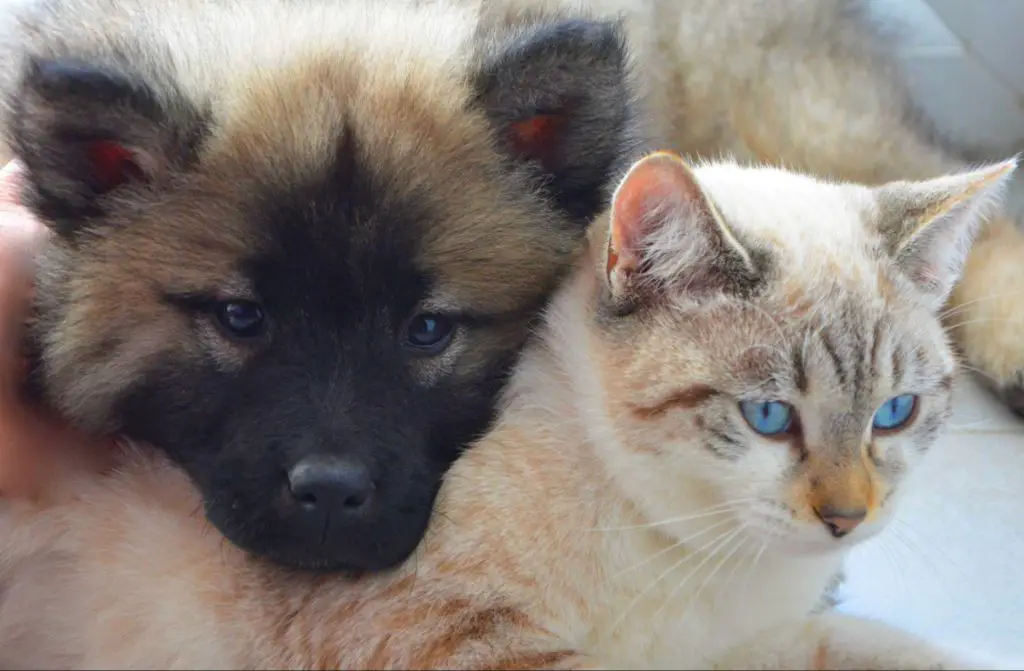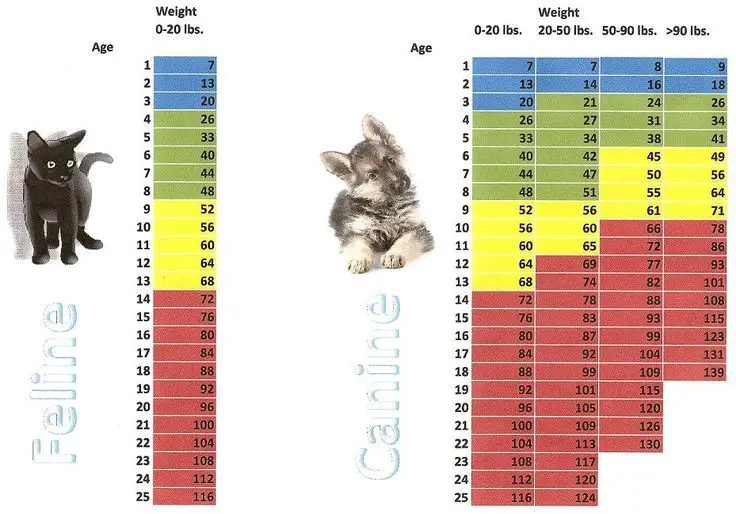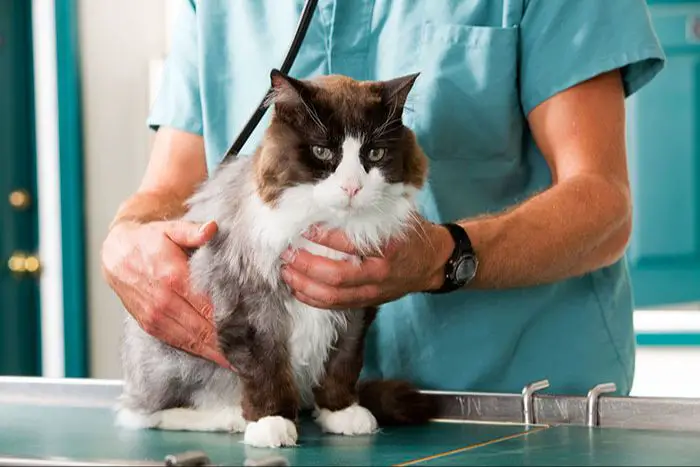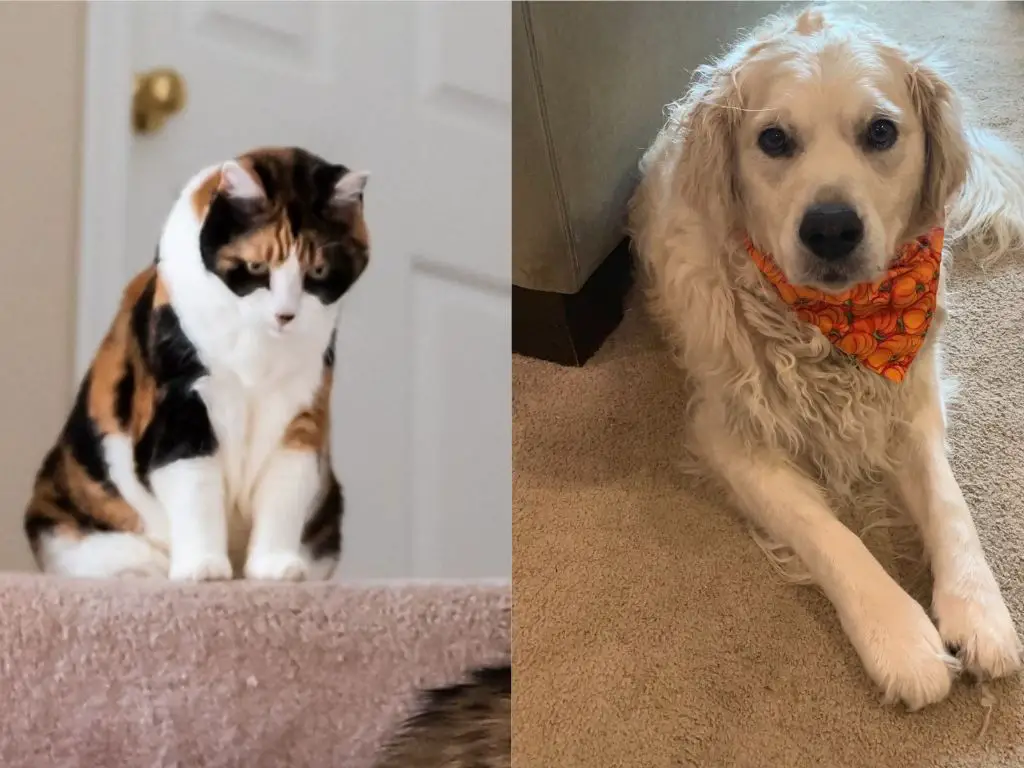The idea that dogs and cats age faster than humans has led to the popular belief that you can calculate an animal’s age in “dog years” or “cat years.” This simply means multiplying the animal’s actual age by some factor to translate it into “human years.” While popular culture frequently states that the conversion is 7 dog years or cat years for every 1 human year, this is an oversimplification. In reality, dogs and cats age differently from each other and at different rates depending on breed, size, and other factors. Their aging process and lifespan are quite different from humans as well. This article will explore the facts behind dog years and cat years, and why they differ from actual human years and each other.
History of the 7 Dog Years = 1 Human Year Idea
The common belief that 1 human year equals 7 dog years likely emerged in the 1950s, though the exact origin is unknown (https://priceonomics.com/the-mythology-of-dog-years/). This myth gained popularity as a simple way for people to calculate their dog’s “equivalent” age in human years. However, there’s no scientific evidence for the 1:7 ratio.
Some speculate that the rule came from the idea that dogs mature faster than humans in early life. While puppies reach adulthood around 1-2 years old, humans don’t fully mature until their late teens or early 20s. This faster development may have contributed to the impression that dog years are “accelerated” compared to human years (https://www.smithsonianmag.com/smart-news/one-human-year-does-not-equal-seven-dog-years-180952929/).
Regardless of its origins, the 7 dog years to 1 human year myth permeated popular culture and became widely accepted as fact, despite no scientific basis.
How Dogs Age
According to the Dog Aging Project, the rate at which dogs age is quite similar to humans in some respects. Just like humans, dogs go through developmental life stages where they mature rapidly at first and then the aging process slows down. https://dogagingproject.org/

In the first year of a dog’s life they reach the developmental stage equivalent to about 15 human years. This is because puppies experience rapid growth and development compared to when they become adults. However, after the first two years of a dog’s life, each year is equivalent to approximately 4-5 human years. So the aging process slows down considerably once they are mature adults.
This is because dogs, like humans, experience their fastest aging and development when young. But as adults, the aging process decelerates. According to the AKC, giant breed dogs tend to age faster than small dogs. But all dogs experience a deceleration of aging once reaching maturity, similar to the human aging process. https://www.akc.org/expert-advice/health/aging-in-dogs-physical-mental-signs/
History of the 7 Cat Years = 1 Human Year Idea
The common myth that 1 human year equals 7 cat years originated in the 1950s from a study comparing the average lifespans of humans to cats. This study suggested the first 2 years of a cat’s life were roughly equal to the first 25 years of a human life. Each year thereafter was approximately 4 cat years for every 1 human year. When multiplied out (2 years x 7 cat years per human year, plus 24 years x 4 cat years per human year), this amounted to 29 cat years being roughly equal to 73 human years.
This became oversimplified as the “7 cat years for every 1 human year” rule of thumb. However, this myth does not accurately reflect how cats age compared to humans. Cats reach maturity around 1-2 years old, while humans don’t reach maturity until around 15-25 years old. So the first 2 years of a cat’s life should equal far more than just 14 human years. Additionally, cats enter middle and senior ages sooner than humans do relative to their lifespan. So the 4:1 ratio after maturity underestimates remaining cat years.
While the 7:1 myth provides a memorable guideline, it oversimplifies the complex biological aging process. A more accurate formula is needed to convert cat years to human years.
How Cats Age
A cat matures and ages very quickly in the first few years of life, then their aging slows down. According to the Cornell Feline Health Center, many cats begin to encounter age-related physical changes between seven and ten years of age1. However, the first year or two of a cat’s life progresses rapidly.
Kittens reach sexual maturity between 6-10 months. By age 1-2 years they are considered no longer kittens, but junior cats. After a cat reaches maturity around 2 years old, each year of age is approximately equivalent to about 4 human years. So a 4 year old cat is similar to a 16 year old child.
While cats do slow down and get greyer in their senior years starting around age 10-12, their aging process does not dramatically slow like a dog’s does late in life. An older cat’s metabolism remains higher compared to a senior dog’s metabolism. This explains why the 7 cat years to 1 human year ratio is not very accurate for cats. Cats simply do not have a steep decline in aging late in life like dogs experience.
Direct Comparison of Dog Years vs Cat Years
When comparing how dogs and cats age, there are some key differences between the two species. Here is a chart showing a direct comparison between dog years and cat years for the first 10 years:

| Dog Age | Dog Year Equivalent | Cat Age | Cat Year Equivalent |
|---|---|---|---|
| 1 year | 15 years | 1 year | 15 years |
| 2 years | 24 years | 2 years | 24 years |
| 3 years | 28 years | 3 years | 28 years |
| 4 years | 32 years | 4 years | 32 years |
| 5 years | 36 years | 5 years | 36 years |
| 6 years | 40 years | 6 years | 40 years |
| 7 years | 44 years | 7 years | 44 years |
| 8 years | 48 years | 8 years | 48 years |
| 9 years | 52 years | 9 years | 52 years |
| 10 years | 56 years | 10 years | 56 years |
As seen in the chart, for the first 10 years of life there is no difference between cat years and dog years. Both species age approximately 15 human years for every 1 year in the first 2 years of life. After 2 years, each additional year ages the equivalent of 4 human years. However, this linear relationship begins to change as dogs and cats get older.
Factors That Influence Aging
There are several key factors that influence the aging process and life expectancy in both dogs and cats. Some of the main elements are breed, size, health conditions, nutrition, lifestyle, and veterinary care.

Breed plays a major role. Studies show that larger dog breeds tend to have shorter lifespans while smaller breeds live longer on average. For example, Great Danes have an average lifespan of 7-10 years while Chihuahuas typically live 12-20 years. In cats, purebred cats may be predisposed to certain genetic conditions that can impact lifespan. However, on average, most cat breeds have similar expected lifespans.
A pet’s size is closely related to breed. Larger dog and cat breeds are more susceptible to musculoskeletal disorders and heart problems while smaller breeds are at higher risk for dental disease. Maintaining an optimal weight for their size, through proper nutrition and exercise, can help pets avoid obesity-related illnesses.
Underlying health conditions significantly influence aging and longevity. Issues like hip dysplasia, cancer, kidney disease, hyperthyroidism, heart disease, and diabetes can shorten a pet’s life if not managed properly. Wellness exams, diagnostics, and preventative care can help detect problems early on.
Lifestyle factors like nutrition, exercise, mental stimulation, and preventative care go a long way in supporting good health and a long life. Providing excellent veterinary care including routine wellness visits, vaccines, dental cleanings, screenings, and prompt treatment during illness allows early intervention for age-related diseases.
While genetics play a part, proactive health management can help dogs and cats achieve longevity within their expected lifespan range. Monitoring for any age-related changes and addressing them quickly optimizes quality of life as pets become seniors.
Average Lifespans
Research indicates that the average lifespan for dogs is between 10-13 years, with smaller breeds living longer than larger breeds on average (Source). For example, a Chihuahua’s lifespan is typically 12-20 years, while a Great Dane’s is 7-10 years. Cats tend to live longer than dogs, with the average lifespan being 12-18 years for mixed breeds and pedigree cats. A few factors that influence lifespan include breed, size, nutrition, veterinary care, spay/neuter status, and genetic health.
According to a 2023 study analyzing over 13 million dogs, the average lifespan for all dogs was 12.7 years (Source). For cats, a study of over 2 million cats found the average lifespan was 15.1 years. So while there is some overlap, cats generally outlive dogs by a few years on average.
Tips to Help Dogs and Cats Age Well
As pets get older, their health and mobility often decline. However, there are many things pet owners can do to help dogs and cats age well and stay as healthy as possible in their senior years.
According to veterinarians, regular veterinary checkups are crucial for monitoring a senior pet’s health and catching any problems early (https://www.splootvets.com/post/how-to-care-for-older-dogs-cats-must-know-tips). Bloodwork, urinalysis, dental exams, and screening for conditions like cancer should be part of the senior wellness exam.
Tailoring nutrition to a senior pet’s needs is also important. Food specially formulated for older dogs and cats contains less calories, extra joint support, and antioxidants. Feeding pets high-quality senior diet helps maintain lean body weight and overall health (https://www.splootvets.com/post/how-to-care-for-older-dogs-cats-must-know-tips).
Owners should modify exercise for less mobile senior pets, focusing on low-impact activities like short walks to avoid injury. Providing ramps, orthopedic beds, and easy access to food/water helps pets with arthritis and other age-related mobility issues (https://www.smalldoorvet.com/learning-center/seniors/keep-senior-dog-healthy/). Keeping heating pads, cooling mats, and fresh water available helps senior pets regulate their temperature.
With some adjustments and proactive veterinary care, owners can ensure their senior dogs and cats continue to lead happy, comfortable lives well into their older age.
Conclusion

In summary, while the ideas of “cat years” and “dog years” provide a rough approximation for comparing lifespans across species, the aging process is much more complex. There are many factors that influence aging, including genetics, diet, exercise, environment and veterinary care. On average, dogs tend to live around 10-13 years, while cats live 12-18 years. However, some dogs and cats can live into their 20s with proper care.
While we may never know exactly how to convert dog and cat years into human ones, we do know that the aging process can be slowed through healthy habits. Providing our furry companions with quality nutrition, regular exercise, mental stimulation, veterinary checkups and love can help ensure they live long, fulfilled lives.
The bottom line is that cats and dogs age differently than humans, and differently from each other too. However, the aging process is comparable across species in many ways. Focusing on healthy living is key to helping our pets achieve maximum longevity.

